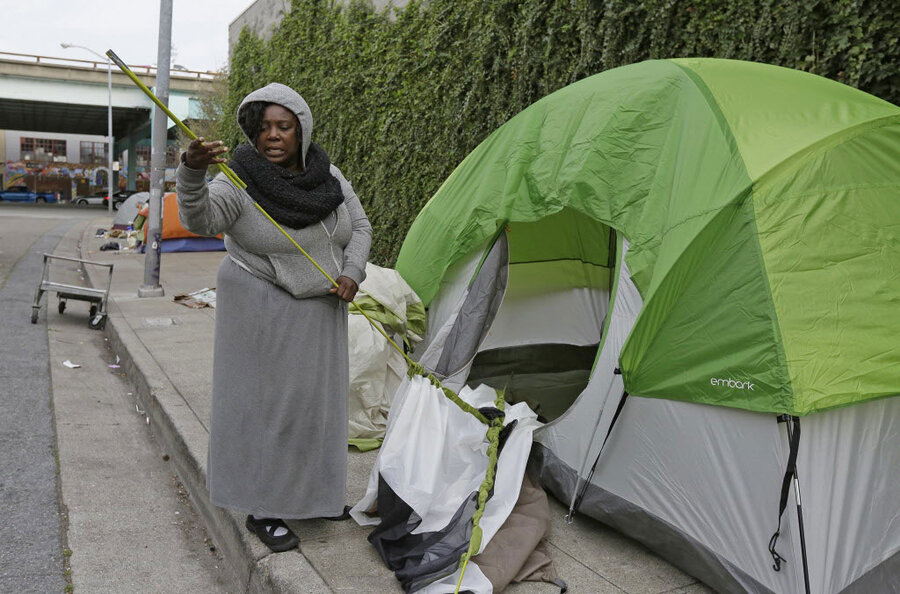Tent city evictions highlight San Francisco's homelessness problem
Loading...
Residents of a homeless encampment in San Francisco have until the end of the day on Friday to vacate the tent city where they have been living.
The city decided to evict the residents of the tent city, located under a highway overpass, after health officials deemed the encampment a health hazard, citing accumulation of feces, urine, and hypodermic needles. Local residents have also expressed concerns about crime and harassment.
San Francisco legislator Malia Cohen told The New York Times that the city’s homeless problem has reached extremes. “I’ve seen feces thrown, panhandlers yelling,” Cohen says, “I’ve seen homeless people rejecting food, and saying, ‘No, I only take money.’ ”
Homelessness is a systemic problem in San Francisco, where the supply of affordable housing can’t keep up with the demand. A 2015 report on homelessness in San Francisco found a total of 6,059 homeless people in the city, 58 percent of whom were unsheltered at the time of the count.
The city has recently ramped up efforts to confront the problem. The mayor of San Francisco has increased spending the homelessness issue to $242 million this year, according to The New York Times.
The city recently made headlines when it cleared homeless people out of tent cities in the busy Embarcadero shopping district prior to the Super Bowl. At that time, the city constructed new homeless shelters, including a Navigation Center intended to help solve the underlying issues of homelessness rather than merely supplying a place to stay.
The city has also attempted to make homeless shelters more attractive to residents, The Times reports.
Still, some of the city's inhabitants say the do not want to leave the encampment for a public shelter. “I kind of want to stay put and fight it out,” tent city inhabitant Elizabeth Stromer, a former nurse, told The Times.
The encampment's residents were given 72 hours to leave in an order posed on Tuesday night.
City officials have made previous attempts to convince people to leave, rather than order them out. The encampment has shrunk from 140 tents to just 40 over the course of the winter. Still, neighbors have continued to voice concerns about safety, and available data supports residents fears, car break-ins are in fact on the rise.
Many San Franciscans believe the city has mishandled the situation.
Some say that the city should be spending more on care for mentally ill homeless people. Between 15 and 20 percent of the city's homeless are mentally ill, Joshua Bamberger, who regularly provides care to homeless people, told the Times.
“To watch mentally ill, medically frail seniors walk out of my office, knowing that they are going to be sleeping in the rain in San Francisco is heartbreaking,” said Bamberger. “It’s completely unacceptable in an advanced society.”
This report contains material from The Associated Press.






